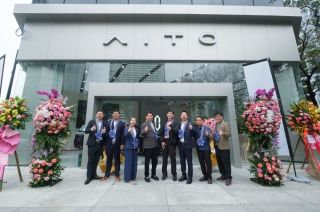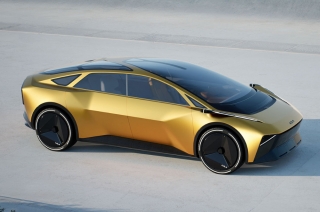
Electric vehicles in the Philippines have only started to get traction in the market recently, as such, charging infrastructure for these types of vehicles is still quite few and far between. Despite this, now that EVs are also beginning to drive farther and further than ever before, more people are getting the confidence to use their EVs as daily drivers. To aid EV drivers from running out of juice while on the go, fast DC chargers are available inside the metro for them to use.
In Quezon City, MG Libis has recognized the need for additional charging stations in the push for electric mobility. According to MG, as traditional cars depend on gas stations, EVs necessitate a well-rounded charging network to cater to both long-distance journeys and everyday commuting requirements. Their contribution to the mission for electric mobility is the introduction of the MG Libis EV DC charger, designed to meet the needs of EV users with utmost efficiency and reliability.
At this point, you might be asking why there’s a need to distinguish between DC and AC charging. To put it simply, the difference between these two charging types is the speed of delivery in which it charges EVs.
AC or alternating current charging is the more common type of charging an electric vehicle. AC chargers are the ones you most commonly find in homes or on early types of EV chargers in malls and shopping centers. An AC charger supplies power to the vehicle's onboard charger, which then converts the AC power into DC to charge the battery. The charging speed, determined by the onboard charger's acceptance rate, varies among different brands due to cost, space, and weight limitations. Because of this, depending on your vehicle, it may take anywhere from four to five hours up to over twelve hours to achieve a full charge using an AC charger.

DC or direct current, on the other hand, is much faster because it circumvents the constraints imposed by the onboard charger and its conversion process by delivering DC power directly to the battery. Charging durations rely on factors such as battery size, dispenser output, and other variables, but generally, DC chargers cut charging times to one to two hours and even to a staggering 15 minutes with vehicles using 800-volt architecture.

MG Libis’ recently opened charging station is a DC charger, which means waiting times to charge your electric vehicle will be considerably shorter than if you were using an AC wall box at your home.
Want to check out MG’s electric vehicle offerings in the country? Check out the full lineup of MG cars on the AutoDeal Car Guide.
Latest News
-
AITO's BGC Experience Center officially opens its doors / News
AITO officially opens its BGC Experience Center, offering buyers a new hub to shop for their next premium ride.
-
Is Kia's Vision Meta Turismo Concept a hint at an upcoming performance car? / News
Kia celebrates 80 years with a look back at its heritage and a bold preview of the brand’s next era in mobility.
-
All-new second-generation Seltos revealed / News
Kia has teased the second-generation Seltos, which will offer three ICE powertrains and a hybrid version soon to follow.
Popular Articles
-
Electric Vehicles in the Philippines for under P1 million
Jerome Tresvalles · Aug 19, 2025
-
Top 3 Cars For Every Lifestyle—What Cars Are Right For You? | Behind a Desk
Caco Tirona · Apr 24, 2024
-
5 Tips to Maximize Fuel Efficiency
Jerome Tresvalles · Sep 09, 2024
-
Five driving habits that are draining your fuel tank
Jerome Tresvalles · Jun 24, 2025
-
Can engine braking harm your engine?
Jerome Tresvalles · Sep 11, 2025
-
Do electric cars even need maintenance?
Jerome Tresvalles · Oct 23, 2024
-
Best vehicles for an active outdoor lifestyle
Shaynah Miranda · Jul 25, 2024
-
How to drive different types of vehicle transmissions
May 23, 2024
-
5 easy ways to keep your car interior clean
Allysa Mae Zulueta · Nov 15, 2021
-
How to survive Metro Manila traffic
Earl Lee · Aug 16, 2022




